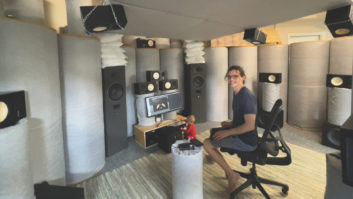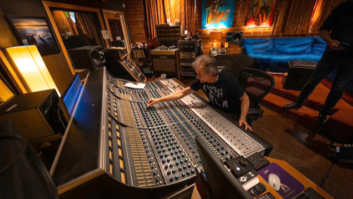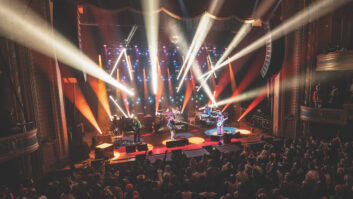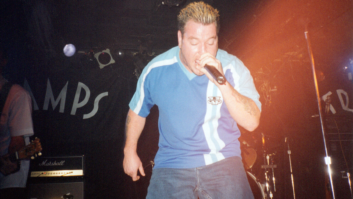It’s hard to believe that 20 years have passed since a busy New York jingle singer named Luther Vandross shook up the recording industry with his first album, Never Too Much. Since then, 13 consecutive albums by Vandross have reached double- or triple-Platinum status, and he routinely sells out concert venues around the world.
Vandross’ next album will be his first on Clive Davis’ new J Records label. In addition to writing and producing material for the record with longtime collaborators Nat Adderly Jr. and Marcus Miller, Vandross has chosen to bring in a new team of producers and songwriters, including Jimmy Jam and Terry Lewis, Warryn Campbell, Ron Lawrence, R.L. (of the J Records group Next), Shep Crawford, Harvey Mason Jr. and Damon Thoms, and Soulshock and Karlin.
A familiar face in Vandross’ production team is his longtime engineer, Ray Bardani. “Ray has worked with me for almost 20 years,” says Vandross. “I’m totally hands-on with the recording process, from the very first hi-hat to the last echo put on in the mix. Ray generally spends a day alone with a track. He’ll give me his first take on a mix, and I’ll make notes. Then we go into the studio together and tweak, then tweak some more and then go to tape.”
Vandross, who brings his own Sony 800G microphone to recording sessions, prefers recording to tape, but Pro Tools was used on the current project, largely because different production people were working on different songs, and many of them work in Pro Tools. “But all of my vocals went to tape,” Vandross says. “By the way, I used to use an AKG 414, but my voice has an airiness and sibilance that the 800 brings out.”
Bardani notes that, “We used to use a 414 because Luther liked its presence. We also had a Neve mic pre and a dbx 160 compressor in the chain. We tracked him this way for the first six or seven albums. Then I heard about the Sony 800G mic, and I wanted to try it out on him. He absolutely loved it. We’ve used it on every album since the Christmas album. That was recorded five or so years ago. We also changed over to the Focusrite Red mic pre, which has a beautiful sound. As far as the dbx 160A, which we now use, it has an over-easy compression function that works well with Luther’s voice. He goes from very soft to louder tones. If the 160A is set properly, it makes the compression kick in slowly, almost like a crossfade. There’s no brick wall effect, and the sound is smoother. We also incorporate a Massenburg EQ into the chain.”
All of the new album’s vocals were tracked by Bardani on a Sony 3348HR at New York’s Hit Factory. “Over the years, we’ve gone from straight analog recording to analog with Dolby, and as the technology has changed, to 48-track digital tape,” Bardani says. “The 3348HR is now my favorite-sounding machine. It’s a 24-bit, 48kHz machine, and it sounds amazing. We used Pro Tools to fly things around, but Luther generally goes for a whole performance rather than take snippets and fix things later. Whether he’s dealing with musicians or singers, he cares about the entire performance, how it’s executed in the studio.
“Luther’s mic technique is phenomenal. He knows how to work the mic better than anyone I’ve ever worked with. He likes a headphone mix that sounds like the record, with ambiances and delays along the lines of what I’ll be going for in the final mix added in. He wants to hear his voice in the mix. That way, he’s better able to gauge how he sits in the track. I’ve learned a lot from Luther about how the tone of a voice makes a big difference in the way it sits in a track. Certain tones sound dissonant, others consonant.”
Vandross says that recording live with a band improves his vocal performance. “There’s a rising to the occasion that you feel put upon to achieve when you track live with musicians,” he observes, “and I do that as much as possible. When you go into the studio at 3 o’clock in the afternoon to overdub a vocal, it’s different; I might sing four lines and only like the third one. Pasting a ‘perfect’ performance together seems to take longer than recording live with musicians. I basically spend the length of the song getting things right between all of us. My batting average is pretty high in this area.”






